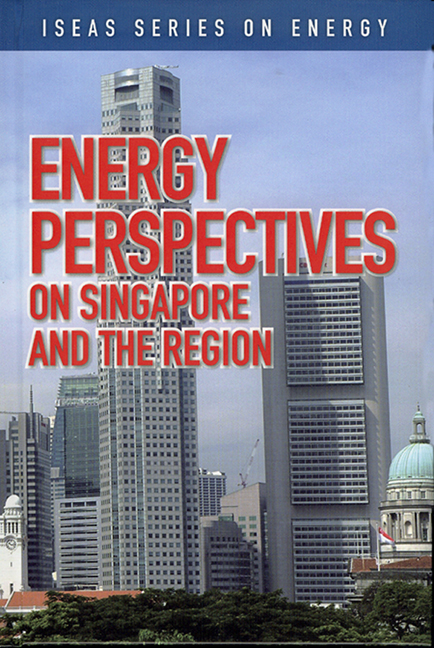Book contents
- Frontmatter
- Contents
- Foreword
- Preface
- The Contributors
- 1 Overview of Singapore's Energy Situation
- 2 Singapore's Changing Landscapes in Energy
- 3 Singapore's Role as a Key Oil Trading Centre in Asia
- 4 Large-Scale Solar PV Power Generation in Urban High-Rise Buildings in Singapore
- 5 The High-Carbon Story of Urban Development in Southeast Asia
- 6 Renewable Energy and the Environment: Technology and Economic Perspectives
- 7 Delivering Results in a Booming Rig Market
- 8 The Success Story of Rig Building in Singapore
- 9 The Singapore Oil Situation
- 10 Singapore Petroleum Company: Adding Value to the Singapore Oil Industry
- 11 Oil Storage: The Singapore Story
- REGIONAL and INTERNATIONAL
- Index
6 - Renewable Energy and the Environment: Technology and Economic Perspectives
Published online by Cambridge University Press: 21 October 2015
- Frontmatter
- Contents
- Foreword
- Preface
- The Contributors
- 1 Overview of Singapore's Energy Situation
- 2 Singapore's Changing Landscapes in Energy
- 3 Singapore's Role as a Key Oil Trading Centre in Asia
- 4 Large-Scale Solar PV Power Generation in Urban High-Rise Buildings in Singapore
- 5 The High-Carbon Story of Urban Development in Southeast Asia
- 6 Renewable Energy and the Environment: Technology and Economic Perspectives
- 7 Delivering Results in a Booming Rig Market
- 8 The Success Story of Rig Building in Singapore
- 9 The Singapore Oil Situation
- 10 Singapore Petroleum Company: Adding Value to the Singapore Oil Industry
- 11 Oil Storage: The Singapore Story
- REGIONAL and INTERNATIONAL
- Index
Summary
INTRODUCTION
Energy is an essential factor to be considered for the better protection of the environment as it is a basic input for consumption and production. This chapter presents the argument that moving away from using fossil fuels — a major source of carbon emissions and cause of global warming — towards non or little carbon-emitting resources such as renewable resources, would help ensure better protection of the environment and be a cost-effective way to reduce carbon emissions. This would also help the world achieve an ultimate environmental protection — preventing an abrupt climate change from occurring.
ENERGY AND THE ENVIRONMENT: AN OVERVIEW
Energy and the environment are inseparable. A circular flow of economy, energy and environment shows that natural environments such as atmosphere, water, land and soils, minerals and energy, and plants and animals are inputs for consumption and production in an economy. At the same time, wastes remaining after recycling and waste treatment are returned to the environment (Hartwick and Olewiler 1998). Hence, the environment is the source of input for consumption and production as well as a waste depository. This is how the environment, including energy, interacts within an economy.
In 2004, fossil fuels such as oil, coal and natural gas supplied almost 90 per cent of primary energy consumption in the world (BP 2005). When these energy resources are used in an economy, not only goods and services are produced, but also some by-products. These by-products are considered the penalties of energy from the different sources (Ramage 1997). Among other factors, carbon dioxide emissions are the most worrisome by-products, as the accumulated emissions in the atmosphere could cause irreversible damage to the environment unless the accumulation is limited to a critical level. In sum, the non-separation of energy from the environment underlines the fact that energy is an acting variable and the environment is the corresponding dependent variable that absorbs the consequences of energy utilized in an economy.
- Type
- Chapter
- Information
- Energy Perspectives on Singapore and the Region , pp. 58 - 66Publisher: ISEAS–Yusof Ishak InstitutePrint publication year: 2007

